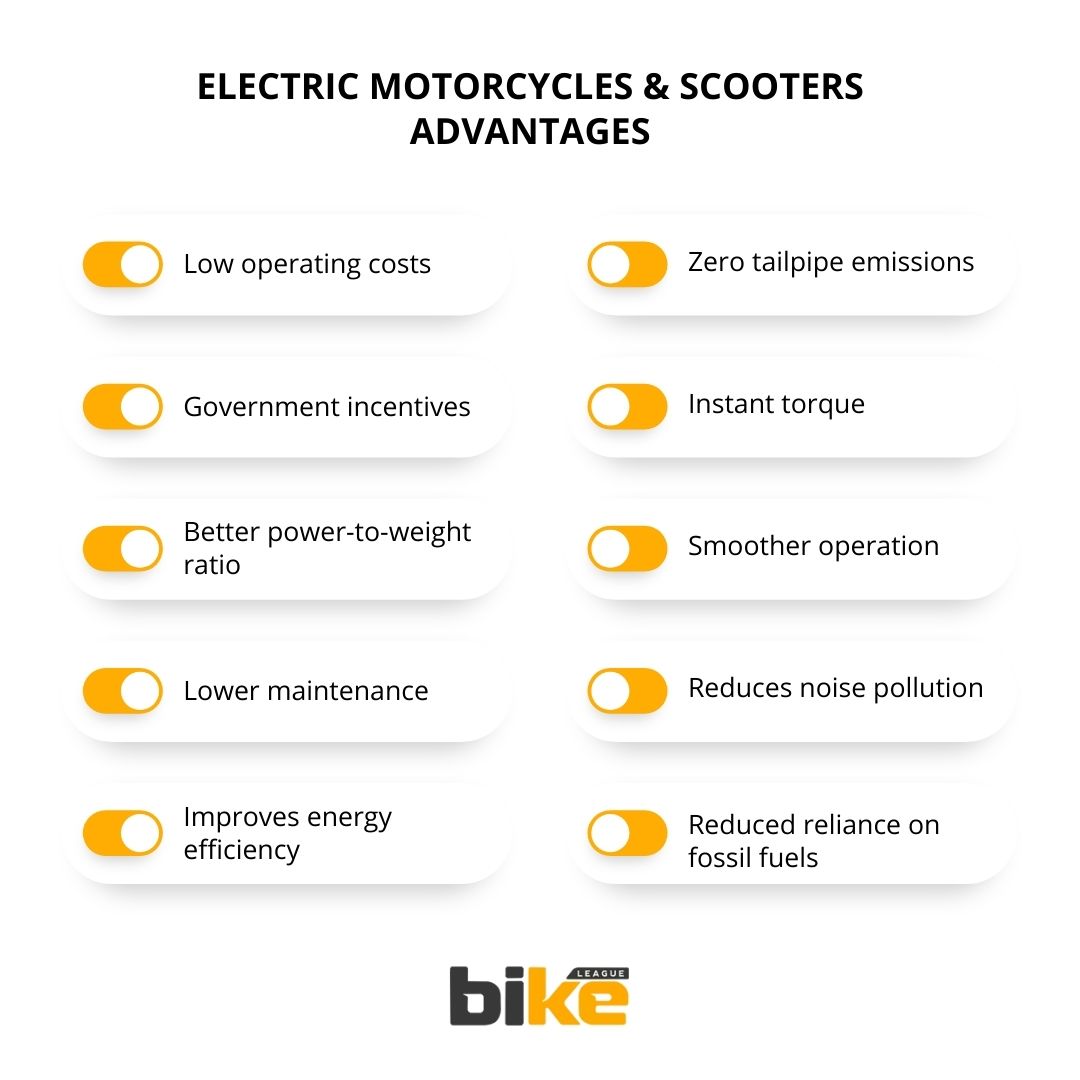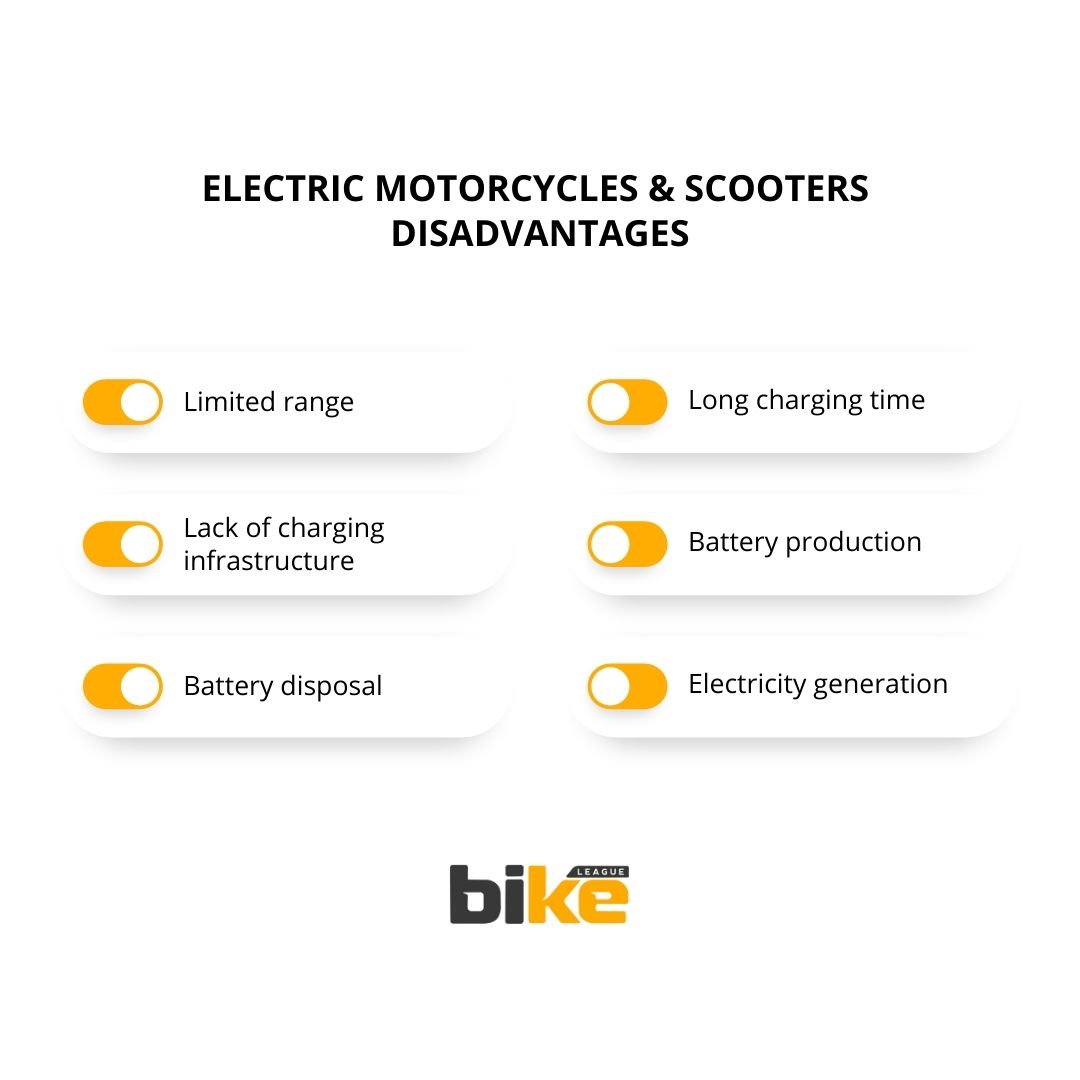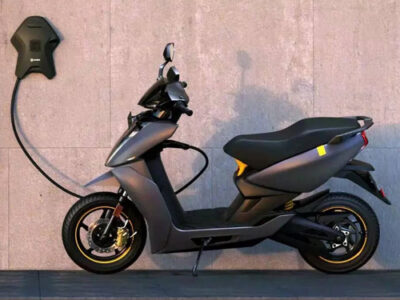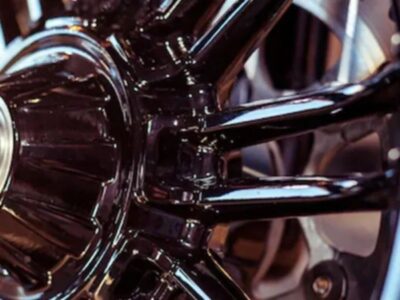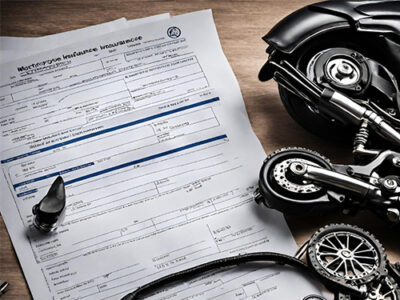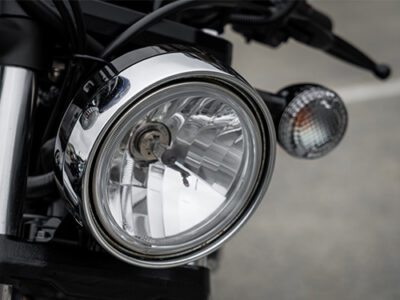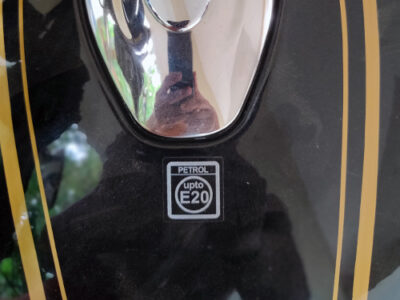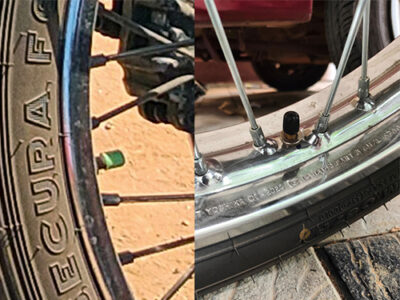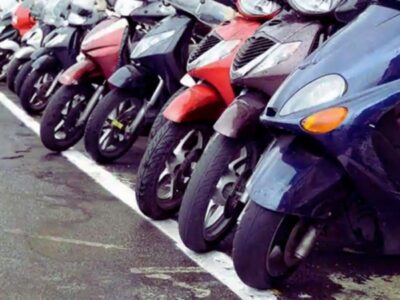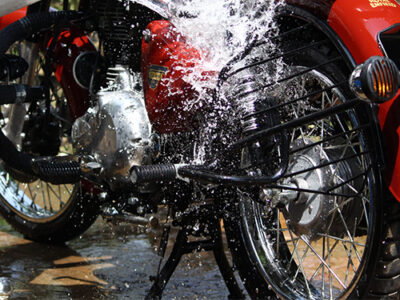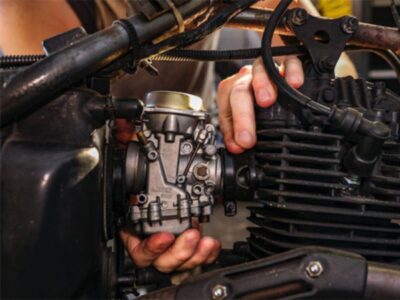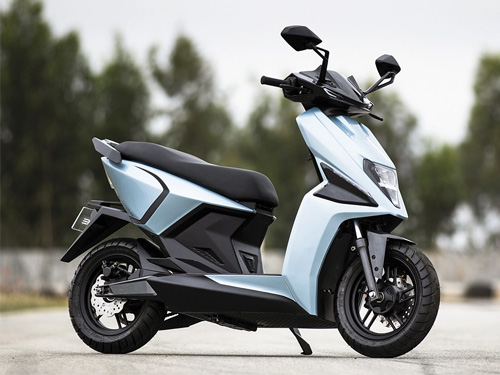
|
Getting your Trinity Audio player ready...
|
Uncover the pros and cons of electric motorcycles & scooters with our comprehensive online resource.
Times have changed so much faster after the COVID-19 pandemic, and the growth of electric motorcycles and scooters worldwide witnessed a surge. In 2022, electric motorcycle sales increased by 54% worldwide. So, is it time to switch to an electric bike? Whatever the technology, it all has its pros and cons. So, what are the pros and cons of electric motorcycles? It’s time to find out.
Pros of electric motorcycles & scooters
Low operating costs
The cost of electricity in India is much lower than the cost of gasoline. For example, the average price of electricity in India is around ₹6 per unit, while the average price of petrol is around ₹100 per litre. This means that electric bikes can save riders significant money on fuel costs.
Electric bikes also require less maintenance than gasoline-powered motorcycles. Electric motorcycles or scooters have fewer moving parts and do not require oil changes. As a result, electric bikes can save riders even more money on maintenance costs.
Zero tailpipe emissions
Tailpipe emissions are the gases emitted from a gasoline-powered vehicle’s exhaust pipe. These emissions include carbon monoxide, nitrogen oxides, and particulate matter. These emissions can contribute to air pollution, which can have several adverse health impacts, including respiratory problems, heart disease, and cancer.
Electric bikes do not produce any tailpipe emissions. This is because they are powered by electricity, not gasoline. This means that electric bikes can help to improve air quality and reduce the negative health impacts associated with air pollution.
Government incentives
The Indian government is offering several incentives to promote the adoption of electric vehicles, including:
- Subsidies on purchase price: The Indian government offers grants of up to ₹15,000 on the purchase price of electric bikes.
- Exemption from road tax and registration fees: Electric bikes are exempt from road tax and registration fees in India.
These incentives can help to offset the higher upfront cost of electric bikes and make them more affordable for Indian consumers.
Instant torque
One of the electric motorcycles’ most significant performance advantages over petrol is instant torque. Electric motors produce maximum torque from 0 RPM, while petrol engines need to rev up to deliver peak torque. Electric motorcycles can accelerate much faster than petrol, especially from a standstill.
For example, the Harley-Davidson LiveWire can accelerate from 0 to 60 mph in 3 seconds. These times are comparable to the fastest petrol-powered supercars.
Instant torque also gives electric motorcycles an advantage in roll-on acceleration. This is the ability to accelerate from a cruising speed quickly. For example, an electric bike can soon overtake a petrol motorcycle on the highway without shifting gears.
Better power-to-weight ratio
Another performance advantage of electric motorcycles is their better power-to-weight ratio. Electric motors are much lighter than petrol engines, which gives electric motorcycles a significant weight advantage.
For example, the Zero SR/S electric motorcycle weighs 485 pounds, while the comparable Ducati Multistrada V4S weighs 573 pounds. This weight difference gives the Zero SR/S a significant acceleration, handling, and braking advantage.
Smoother operation
Electric motors have no moving parts, which makes them much smoother and quieter to operate than petrol engines. This can make electric motorcycles more enjoyable, especially in urban traffic. Electric motorcycles also have a lower centre of gravity than petrol motorcycles due to the weight of the batteries being located low in the frame. This gives electric motorcycles better handling and stability.
Lower maintenance requirements
Electric motors have far fewer moving parts than petrol engines, which means that they require less maintenance. Electric motorcycles do not need oil changes, air filter replacements, or spark plug replacements.
This can save electric motorcycle owners a significant amount of money and time throughout the motorcycle’s lifespan.
Reduces noise pollution
Noise pollution is the excessive noise that is produced by human activities. Noise pollution can have several negative impacts, including hearing loss, tinnitus, stress, and sleep deprivation. Gasoline-powered motorcycles can be very noisy. This is because the gasoline engine and exhaust system produce a lot of noise. Electric motorcycles, on the other hand, are much quieter. This is because electric motors do not have the same level of noise as gasoline engines. By using electric motorcycles, we can help to reduce noise pollution and improve public health.
Improves energy efficiency
Gasoline-powered motorcycles are very inefficient. This is because they only convert about 20-30% of the energy in gasoline into mechanical energy. The rest of the power is lost as heat. Electric motorcycles are much more efficient than gasoline-powered motorcycles. This is because they convert about 80-90% of the energy in electricity into mechanical energy. Electric motorcycles can produce more miles per unit of energy than gasoline-powered motorcycles. Improved energy efficiency can help to reduce greenhouse gas emissions and conserve energy resources.
Reduced reliance on fossil fuels
Fossil fuels are finite, and their combustion contributes to climate change. Electric motorcycles do not require gasoline, which means they help to reduce our reliance on fossil fuels. Using electric motorcycles can help protect the environment and reduce our impact on climate change. Climate change is a severe issue facing humankind, requiring serious intervention and proactive steps.
Cons of electric motorcycles & scooters
Limited range
The range of electric motorcycles is still a limiting factor, especially in India, where there is a need for charging infrastructure. However, the range of electric motorcycles is constantly improving, and several models are available with ranges of over 100 km on a single charge.
Long charging time
Charging an electric motorcycle battery can take several hours, especially using a standard charger. However, fast chargers can charge an electric motorcycle battery in as little as 30 minutes. However, the problem with fast chargers is that they reduce the battery’s lifespan and should be used only in emergencies.
Lack of charging infrastructure
There is no widespread network of electric motorcycle charging stations in India. This can make finding a place to charge your motorcycle challenging if you ride long distances. However, the infrastructure for electric vehicles is improving all the time.
Battery production
Lithium-ion batteries used in electric motorcycles can have a negative environmental impact. Mining lithium and cobalt, two critical components of lithium-ion batteries, can be environmentally harmful.
However, the environmental impact of battery production decreases as new and more sustainable mining and battery manufacturing processes are developed.
Battery disposal
The disposal of electric motorcycle batteries is a growing environmental concern. Electric motorcycle batteries are made up of lithium-ion cells containing many hazardous materials, including heavy metals and toxic chemicals. Suppose these batteries are not disposed of properly. In that case, they can release these pollutants into the environment, contaminating the soil and groundwater.
There are many challenges associated with the disposal of electric motorcycle batteries:
- The batteries are very heavy and bulky, making them difficult to transport.
- The batteries contain hazardous materials requiring special handling and disposal procedures.
- Few facilities are equipped to recycle electric motorcycle batteries.
As a result of these challenges, many electric motorcycle batteries end up being disposed of in landfills, where they can pose a serious environmental hazard.
Electricity generation
The electricity used to charge electric motorcycles is generated from various sources, including coal, natural gas, nuclear power, and renewable energy sources. If the electricity is generated from fossil fuels, this will contribute to greenhouse gas emissions.
However, the electricity grid is becoming increasingly decarbonized as more renewable energy sources are added. Electric motorcycle riders can also charge their motorcycles using renewable energy sources, such as solar or wind power.
FAQ about electric motorcycles & scooters
Electric motorcycles or petrol motorcycles, which is better?
Suppose you are looking for a fast, smooth, and low-maintenance motorcycle. In that case, an electric bike is a good choice.
However, suppose you need a motorcycle with a long-range and short refuelling time. In that case, a petrol motorcycle is a better option.
Here are some additional factors to consider when choosing between an electric motorcycle and a petrol motorcycle:
- Budget: Electric motorcycles are typically more expensive than petrol motorcycles upfront. However, the lower operating costs of electric motorcycles can offset the higher upfront cost over time.
- Usage: If you commute a short distance to work each day, an electric motorcycle may be a good option for you. However, a petrol motorcycle may be a better choice if you need to travel long distances on your bike.
- Charging infrastructure: If you live in an area with a suitable charging infrastructure, an electric motorcycle is a viable option. However, a petrol motorcycle may be a better choice if you live in an area with limited charging infrastructure.
Are electric motorcycles automatic?
Yes, electric motorcycles are generally automatic. They do not have a clutch or gears to shift. Electric motors produce maximum torque from 0 RPM, so shifting gears to accelerate is unnecessary.
Some electric bikes may have a mode that allows you to simulate shifting gears, but this is unnecessary for regular operation.
The lack of a clutch and gears makes electric motorcycles easier to ride and maintain than petrol motorcycles. It also makes them more accessible to riders with disabilities.
Does electric motorbikes have gears?
Yes, some electric motorbikes have gears, but most of them do not have the same. Here are some examples:
Harley Davidson LiveWire: The Harley-Davidson LiveWire is another high-performance electric motorbike with a 6-speed transmission. This gives the rider much control over the motorbike’s performance and allows them to customize the riding experience.
Kawasaki Z EV: The Kawasaki Z EV is a naked electric motorbike with a 4-speed transmission. This makes it a good choice for riders who want a fun and sporty electric motorbike that is also easy to ride.
Why electric bikes are so expensive?
Electric bikes are more expensive than regular bikes for several reasons.
- Cost of electric components: The electric components of an electric bike, such as the motor, battery, and controller, are expensive to produce.
- Research and development costs: Electric bike manufacturers have invested heavily in research and development to bring new and innovative products to market. These costs are passed on to consumers in the form of higher prices.
- Economies of scale: Electric bikes are still a relatively new product, and production volumes are not as high as for regular bikes. Electric bike manufacturers cannot benefit from economies of scale, which drives costs.
Are electric bikes & scooters the future?
Electric vehicles are likely to play a significant role in the future of transportation. They offer several advantages over traditional gasoline-powered motorcycles, including environmental benefits, Lower operating costs, better performance, and lower maintenance requirements.
In addition, the technology behind electric motorcycles is rapidly improving. Electric motorcycles are becoming more powerful, affordable, and have longer ranges.
As a result of these factors, electric motorcycles are becoming increasingly popular. In 2022, electric motorcycle sales increased by 54% worldwide. This trend is expected to continue in the coming years.
Conclusion
Throughout this article, we discussed the pros and cons of electric motorcycles in India. Let’s conclude about these factors in a nutshell.
Pros of electric motorcycles & scooters
- Low operating costs
- Zero tailpipe emissions
- Government incentives
- Instant torque
- Better power-to-weight ratio
- Smoother operation
- Lower maintenance requirements
- Reduces noise pollution
- Improves energy efficiency
- Reduced reliance on fossil fuels
Cons of electric motorcycles & scooters
- Limited range
- Long charging time
- Lack of charging infrastructure
- Battery production
- Battery disposal
- Electricity generation
If you have any other doubts or queries, email us at bikeleague2017@gmail.com. We are always eager to help and assist you. Also, here are several social media platforms of Bikeleague India to raise your suspicions.

